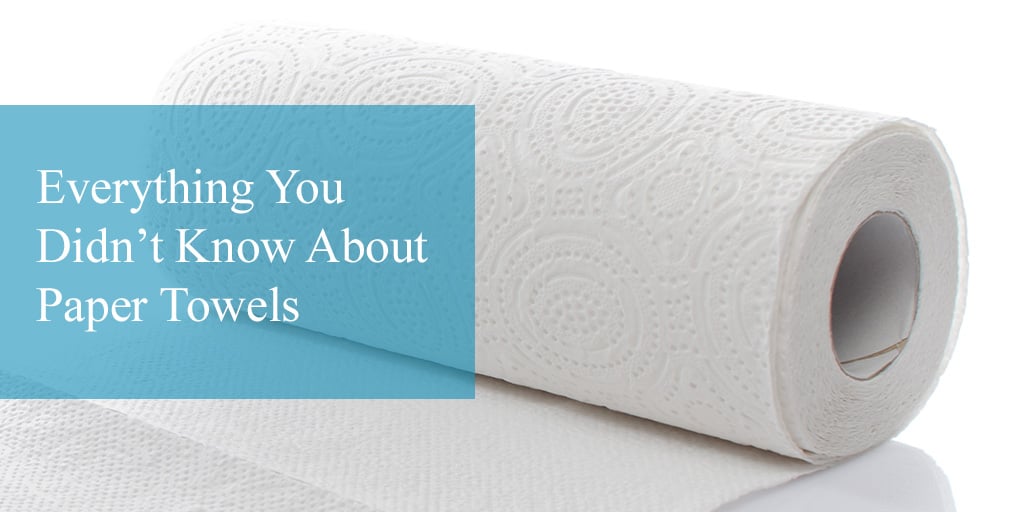For many, paper towels have become a ‘can’t live without them’ item. From kitchens to bathrooms, you could probably find a roll of paper towels in almost every home in America. But how did they become so indispensable?
A Brief, One Sheet History of Paper Towels
Inventing a new product can take years of dedication and testing to create something that’s just right before it hits the market. But sometimes, new inventions are accidents in disguise. To understand how the paper towel industry got on a roll, we need to unwrap its link with toilet tissue.
Let's rewind to 1907. Back then, Scott Paper Company was one of the leading toilet paper manufacturers in the United States. The business had been booming for founder Arthur Scott since the company's inception in 1879, but then disaster struck.
A batch of toilet tissues wasn’t able to be used—an entire train car of it! The paper was wrapped into rolls so thick they couldn’t be used to make toilet paper. The cargo couldn’t be shipped back or used either. It would have to be thrown away! Not wanting to take such a substantial loss, Scott started searching for another answer.
He remembered a tabloid article he’d read about a Philadelphia teacher who started providing soft paper to her students with colds. The paper tissues were a substitute for the commonly used cloth towels, which she thought were only spreading the disease. On the other hand, paper tissues were easy to dispose of and decomposed!
The ‘Ah-ha!’ moment went off for Scott, and his production plant got to work creating the first-ever towel-sized sheets of paper.
What are Paper Towels Made of?
Ingredients |
Purpose |
| Water, Wood, and Pulp |
|
| Printing Ink |
|
| Water-Based Adhesives |
|
| Conditioners |
|
Paper Towel Manufacturing with Biodegradable Adhesive
.jpg?width=1000&name=shutterstock_510317089%20(2).jpg)
Non-toxic, water-based adhesives play a big part in paper towel manufacturing. How the sheets of paper are adhered together is the secret to paper towel absorbency!
Paper towel manufacturing begins with the creation of paper pulp. Once the pulp is cleaned and bleached, it is processed using a drying cylinder, often called a Yankee dryer. The dryer dries out the paper pulp on a roller and then scrapes the paper down to the desired thickness for each sheet.
The magic happens during the scrapping process. Water-based glue is sprayed on the roller so that some of the pulp can not be scraped away. This thin layer left behind becomes one of the two or multiple sheets of paper that will form the finished paper towel. The next step in paper towel manufacturing can follow one of two procedures: creping and embossing.
Creping with Protein Adhesive
Creping with adhesive gives the paper flexibility and creates open areas for water absorption. The internal micro-fold structure creping creates is essential to allow the paper towel to absorb and hold moisture.
Embossing Papers Towels
Embossing creates the effect of having multiple sheets of soft tissue paper with spaces in between the layers, like a quilt. The top of the towel is modified using a shaped surface as opposed to a flat working surface. This process creates raised areas in the flat background of the soft tissue paper, and these open spaces can absorb and hold water.
To learn more about how paper towels are manufactured, check out our blog.
Interesting Facts to Absorb
- Manufacturers often emboss diamonds or circles on paper towels to improve absorption.
- Paper towels are consumed the most by Americans.
- Paper towels are the second most used product in the tissue industry.
- The resin side of the towel is used to improve the wet strength of a paper towel.
- Paper towel manufacturers use both protein and plant-derived adhesives depending on the application.
- Paper towels are prized for being sanitary and easy to dispose of.
Interested in Improving Your Paper Towel Manufacturing Process?
At LD Davis, we have been helping major paper towel manufacturers create sanitary and absorbent products for decades. Our water-based glues are stronger than the competition's, allowing manufacturers to use our product more economically. Contact the adhesives experts at LD Davis to see how our glue can improve your paper towel manufacturing process.







